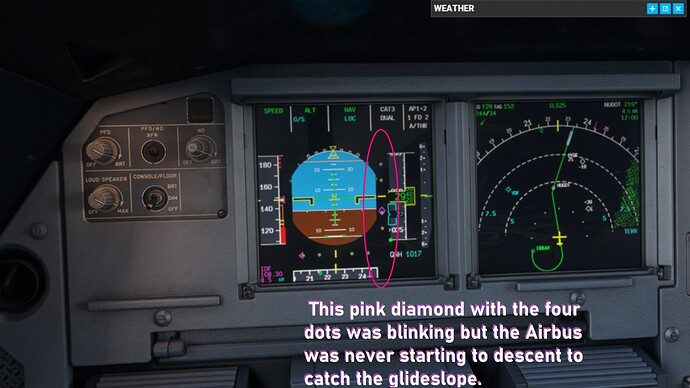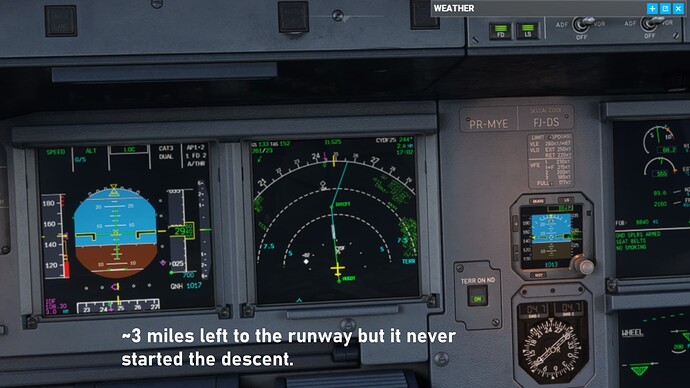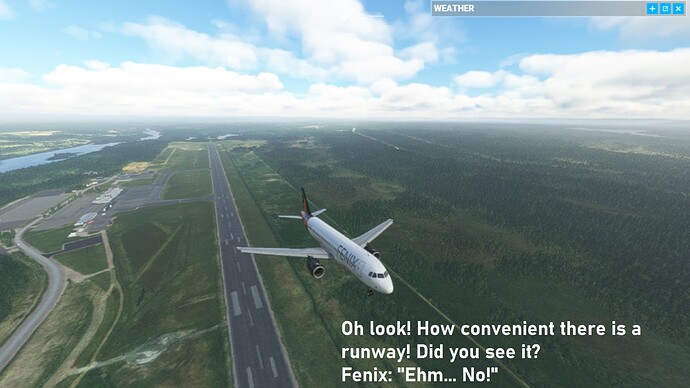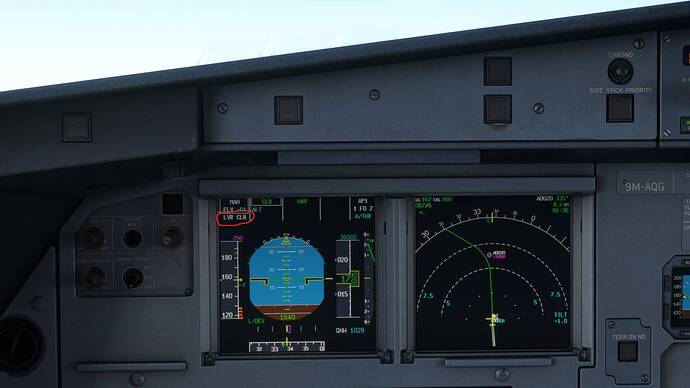Geez, Airbus is mostly taking off in FLX detent and climbing in CL detent.
If you’re completing/following the EFB’s Departure Performance app, you’ll see the Flex setting. Putting that info into the Perf page of the MCDU, then using the Flex Detent on the throttle should be enough to climb out from the runway. Then once instructed, CLB detent will climb out as normal.
I’ve had no issues.
relatively new to the Fenix and the A320 (flown Boeings and GA only previously!)
1)Just wondering if anyone can recommend a good basic (beginners) guide (you tube or written) to the aeroplane - in terms of setting it up, autothrust and autopilot and how they function?
2)Note have also been struggling to “stick” fly it successfully ( and I realise its "mostly automated!) - have tried a few times just to stick fly an approach and always find it likes/wants to sink even if the airspeed is high or increasing (continue to get this “sinking” behavior) - note this is in contrast to the FBWA320 which I tried and I can comfortably fly without his kind of behavior - just wondering what might be causing this and is there something I can tweak to correct it? (note its sometimes so bad I give full black pressure to the stick (airspeed is well over 200knots) and the plane wants to sink! - have already tried tweaking the elevator authority seeting…
It seems you forgot to retract the flaps after take-off. That would definitely lead to unexpected behaviour throughout the flight.
I don´t exactly know what the flex temperature is, because I don´t have an instruction manual for this airplane except all the notes I have taken while watching YouTube tutorials, but I heard it is simulating a very hot environment to protect the turbines from overheating by limiting thrust.
Flex thrust is maximum allowed long-time thrust, TOGA is full thrust (but limited for 5 minutes or so), and CL is the standard thrust setting to protect the engines most.
Because all the real Airbus pilots are taking off with TOGA I am taking off with TOGA because I am good sheep going with the real pilots herd… ![]()
Are they?
The point of flex thrust is to minimize engine wear and tear by using reduced thrust on takeoff, when runway length and weather allow it.
I think you might be mixing that up with MCT = maximum continuous thrust. While both thrust modes share the same detent setting of the thrust levers, they are different modes anyways.
With the lever sitting in the FLX/MCT detent while autothrust being enabled the Airbus is in flex takeoff mode. If autothrust is disabled it is in mct mode instead.
Mostly used for a normal (derated) takeoff in reality should be ATHR enabled and thrust lever in FLX position.
MCT on the other side would be used in abnormal procedures, i.e. after one engine failed. In that case you would switch ATHR off pull the lever of the failed engine to idle while setting the operating one to MCT.
That is what I understood how it should work - being no expert here either.
Real airline pilots don’t typically take off with full TOGA power. Below is the question put in a forum filled with pilots and you can see that they all agree that a derated or flx style takeoff are used for most situations. Unless they are at altitude, short runway, heavy load, winshear reported, etc. they use flx or a derate to improve the engines’ life and reduce fuel cost.
Airlines operate on extremely small margins, so things like taking off with flx or taxiing with one engine shut down actually saves a surprising amount of fuel and maintenance in the overall scheme. Hopefully, this is useful info and helpful ![]() In the sim, we don’t have to always worry about fuel cost or engine life so why not TOGA here or there, but if you want to simulate real ops go for the flx the fenix EFB gives you
In the sim, we don’t have to always worry about fuel cost or engine life so why not TOGA here or there, but if you want to simulate real ops go for the flx the fenix EFB gives you ![]()
Not sure if you’re just kidding but no, IRL A320 pilots use FLX detent for take-off where possible (most of the time)
Ah so the FLX detent is the realistic procedure to take-off. Thank you very much for this info I was always taking off with TOGA because some real life Airbus pilot YouTubers showed me to do so.
Oh I would love to have some real Airbus HOTAS with an illuminated thrust lever giving a real satisfying click for CL FLX and TOGA ![]()
By the way does anyone know what happened during this landing - the pink diamond for the ILS was blinking for half a minute but the Airbus never even started to descent and even tried to catch the VNAV of the glideslope.
Was the mistake in this case the strange angle programmed as route to the runway, or not activating the approach page on the MCDU?
It was not possible to program a better route because I could not find any waypoint or VOR and was too lazy to add a manual waypoint 15 miles away in one straight line to the runway.
Many planes will not capture the G/S before they have captured the LOC. This is important because outside of the LOC +/- a bit of acceptable deviation, the G/S signal may be distorted, or terrain clearance may not be sufficient for following the G/S.
Once you captured the LOC, you were significantly above the G/S and the G/S mode will only activate when your plane actually, well, intercepts the G/S, not when the G/S is somewhere leagues below you.
What you should have done is sink with DES, OP DES or V/S mode, according to the STAR and / or approach plate, so that you are at a correct altitude (near or below the G/S) at the final approach fix and can then capture it along with the LOC.
Of course, all of this is moot since you did not even use a STAR which would give you an Initial or Final Approach Fix or height profile, so it’s no surprise your landing went awry. (By the way, if you can’t get the route to look like you want it to with FMC waypoints, you can just use the autopilot’s heading mode to go wherever you want.)
Fenix has provided a very nice take-off performance calculator in the EFB. It calculates FLX value you enter on the performance page. It takes into account the weather at the departure airport and sometimes you can even specify a runway/taxiway intersection from which you plan to take-off.
No, they don’t do that. TOGA is only used in an emergency situation or go-around. In real life, most of time pilots take off with flex detent in managed mode.
In my opinion that’s also incorrect. You move the throttles to CL detent before you retract flaps, at thrust reduction height. When you reach that height you get notified by flashing LVR CLB message on the PFD, telling you it’s time to move the throttles back to CL detent.
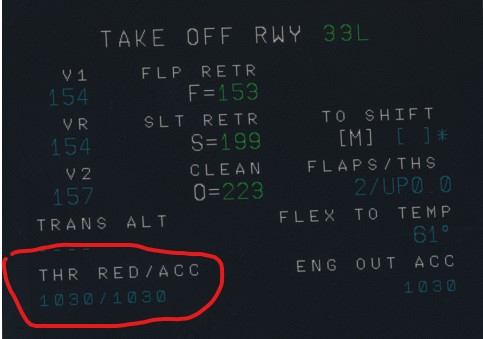
[quote=“KinkedoNau1, post:4024, topic:417613, full:true”]
No tengo problemas para ganar velocidad en modo clb y siempre vuelo a plena carga…
the last 2 flights the problem has been corrected… putting the vertical speed in 1400 I don’t know if it is that or to install it again
I would suggest do not put a vs in, just keep it in managed mode (the up click in the knob of altitude), the plane will choose its attainable max speed
Paypal doesn’t work. Do anyone has a solution?
Yes, you just need to wait for Paypal to sort out the issue that they have with processing payments for Fenix.


